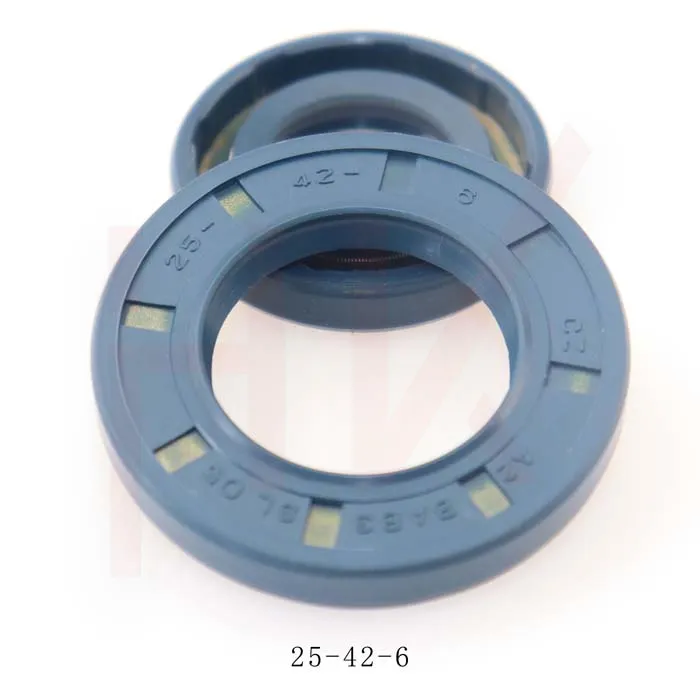Dec . 05, 2024 16:52 Back to list
Hydraulic Cylinder Dust Seal Maintenance for Optimal Performance and Longevity
Understanding Hydraulic Cylinder Dust Seals Importance, Types, and Maintenance
Hydraulic cylinders play a crucial role in various industrial applications, providing the necessary force to lift, push, pull, or move heavy loads with impressive precision. However, the efficiency and longevity of these hydraulic systems hinge significantly on one often-overlooked component the dust seal.
What is a Hydraulic Cylinder Dust Seal?
A hydraulic cylinder dust seal is an essential component designed to prevent contaminants such as dust, dirt, and moisture from entering the cylinder’s interior. This seal is positioned on the exterior side of the cylinder, typically at the rod entrance point, where it functions as a barrier against external elements. As hydraulic cylinders operate, they are naturally exposed to various environmental factors that could compromise their performance and lifespan. Thus, a resilient and effective dust seal is critical to maintaining the integrity of the hydraulic system.
Importance of Dust Seals
The primary function of a dust seal is to protect the inner components of a hydraulic cylinder. Contaminants can cause significant wear and tear on hydraulic components, leading to malfunctions, reduced efficiency, and costly repairs. Below are some of the critical reasons why dust seals are indispensable in hydraulic systems
1. Preventing Contamination Dust and debris can lead to internal damage, abrasion, and ultimately failure of hydraulic seals and components. By thwarting these contaminants at the point of entry, dust seals ensure that the hydraulic fluid remains uncontaminated, maintaining smooth operation.
2. Enhancing Longevity Hydraulic systems are a significant investment for many businesses. By effectively keeping contaminants out, dust seals can prolong the life of the hydraulic cylinder and its components, reducing the frequency of replacement or repair.
3. Maintaining Performance A clean hydraulic cylinder maintains pressure better and operates more efficiently. The presence of debris can hinder movement within the cylinder, leading to diminished force and responsiveness.
4. Cost Efficiency By preventing issues before they arise, effective dust seals can lead to lower maintenance costs and fewer operational downtimes, enhancing overall productivity.
Types of Dust Seals
There are various types of dust seals available, each designed to meet specific operational needs and environmental conditions. The common types include
hydraulic cylinder dust seal

- U-Cup Seals These seals have a U-shaped design that allows for easy installation. They are commonly used in low to moderate-pressure applications.
- V-Ring Seals The V-ring integrates a flexible, elastic design that can adapt to slight misalignments, making it suitable for dynamic applications.
- Wiper Seals Primarily used as a secondary sealing element, wiper seals prevent the ingress of dirt and debris while allowing the hydraulic rod to move freely.
- Polymer Seals Made from various synthetic materials, polymer seals offer excellent resistance to wear and can handle extreme temperatures, making them suitable for rigorous environments.
Maintenance Tips
To ensure the longevity and effectiveness of your hydraulic cylinder dust seals, regular maintenance is paramount. Here are a few essential tips
1. Regular Inspection Check seals for signs of wear, cracks, or other damage. Early detection of issues can prevent further complications.
2. Clean the Cylinder Regularly clean the exterior of the hydraulic cylinder to remove dust, dirt, and debris that could potentially enter through the seals.
3. Use the Right Lubricant Ensure that the hydraulic fluid used is compatible with the materials of the seals. This contributes to reduced wear and tear.
4. Monitor Operating Conditions Pay attention to the operating environment. If the seal is exposed to harsher conditions than anticipated, it may require more frequent inspections and potential replacement.
Conclusion
In summary, hydraulic cylinder dust seals are vital components that significantly impact the efficiency and reliability of hydraulic systems. By preventing contamination, enhancing performance, and contributing to cost efficiency, they play a crucial role in various industries. By understanding their importance, types, and maintenance requirements, users can ensure their hydraulic systems operate smoothly and effectively for years to come. In the realm of hydraulics, attention to detail, especially in the form of dust seals, can make all the difference between seamless operation and untimely failure.
-
Unlocking the Potential of Hydraulic Systems with Essential Sealing Solutions
NewsAug.06,2025
-
Unleash the Power of Your Hydraulic Systems with Our Premium Seal Kits
NewsAug.06,2025
-
Specialized Hydraulic Seal Kits for Breakers, Pistons, and Presses
NewsAug.06,2025
-
Revitalize Hydraulic Systems with Premium Repair and Seal Kits
NewsAug.06,2025
-
Fortify Your Cylinders with Premium Sealing Solutions
NewsAug.06,2025
-
Elevate Hydraulic System Reliability with Specialized Seal Kits
NewsAug.06,2025
-
TCN Oil Seal Metal Ring Reinforcement for Heavy Machinery
NewsJul.25,2025
Products categories
















